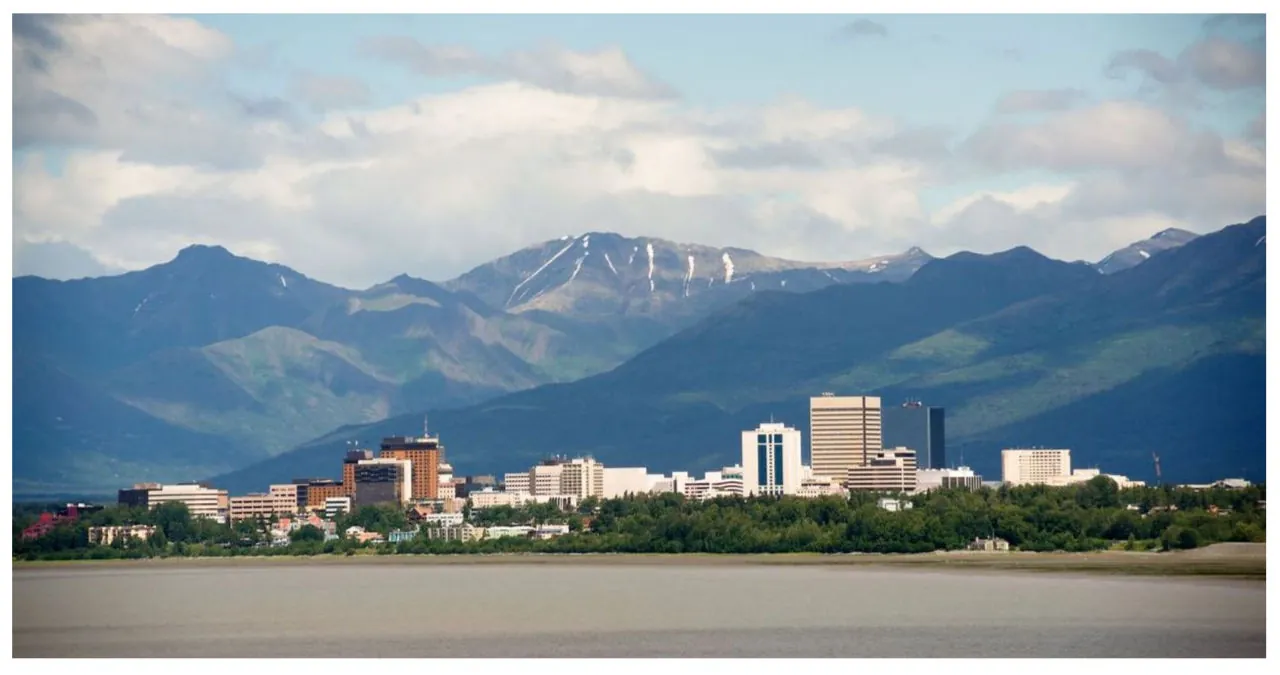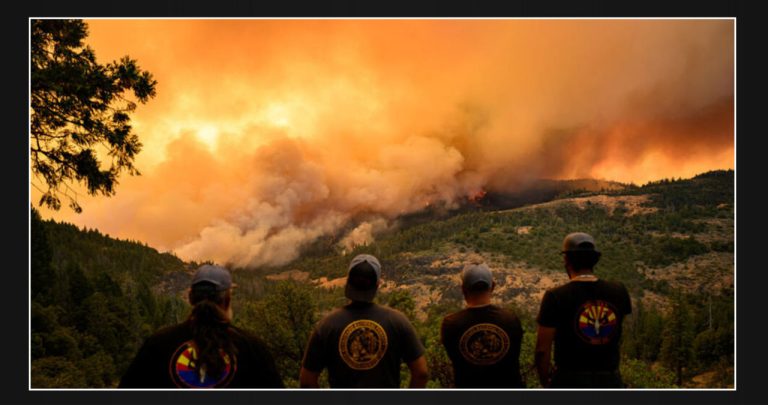Alaska boasts breathtaking natural beauty, a wealth of wildlife, and a vibrant mix of cultures. However, not every town in the state provides an ideal living environment, particularly in light of the challenges posed by climate change, economic downturn, and social issues. Several towns are grappling with severe problems like increasing sea levels, thawing permafrost, land erosion, high crime rates, limited incomes, inadequate education, and limited opportunities. Consequently, many individuals are leaving these towns in search of better prospects elsewhere. Let’s explore seven of the most notorious towns in Alaska that are experiencing significant population loss.
Seven Alaskan Towns Facing Exodus: A Statistical Overview
| Town | Geographic & Cultural Significance | Key Challenges |
| Newtok | Yupik cultural site, exposed to melting permafrost & rising Ninglick River | Sea level rise, erosion, projected submergence by 2025 |
| Kivalina | Inupiat home for over 1,000 years, vulnerable to sea level rise, melting sea ice & coastal erosion | Projected to become uninhabitable by 2025, legal action against oil & gas companies |
| Galena | Trading post, WWII & Cold War military base | Economic decline, population loss, devastating 2013 flood |
| Tanana | One of Alaska’s oldest settlements, remote location with limited access | High crime rate, low quality of life, 2014 trooper deaths highlight social issues |
| Cordova | Renowned fishing town, reliant on salmon & halibut | Fluctuating market, competition, oil spills, invasive species, isolation after 2011 avalanches |
| Whittier | Popular tourist destination with cruise ships | Unique living conditions in 14-story Begich Towers, harsh weather |
| Barrow | Northernmost U.S. point, largest & oldest Inupiat settlement | Remote location, extreme weather, melting sea ice, cultural challenges |
Newtok
Newtok holds significant historical and cultural importance for the Yupik people, marking the site of their initial encounter with Russian explorers in the 18th century. However, the town faces a dire predicament as the effects of global warming lead to the melting of the permafrost beneath it. In addition, the relentless erosion caused by the rising Ninglick River is gradually claiming an average of 70 feet of its riverline and coastline each year. At this rate, the entire town is projected to be submerged by 2025. Recognizing the urgency of the situation, the first Yupik residents began their relocation to Mertarvik in 2019. Situated on the hillside of a volcanic island, this new town offers a safer haven. Nonetheless, the process of relocation has been a complex and demanding one, requiring diverse sources of funding, military support, and meticulous logistical planning.
Kivalina
Kivalina, home to the Inupiat people for over a thousand years, is facing a grave threat from rising sea levels, melting sea ice, and coastal erosion. These environmental changes have rendered the town increasingly susceptible to storms and flooding, posing a significant risk to its residents. Tragically, it is projected that Kivalina will become uninhabitable by 2025. Since 1992, the community has been striving to relocate to a safer area. However, they have encountered numerous challenges in securing the necessary funding, land, and consensus. In their pursuit of justice, the town has taken legal action against various oil and gas companies, holding them accountable for their contributions to global warming and the subsequent endangerment of lives and livelihoods.
Galena
Once a bustling trading post and a strategic military base during World War II and the Cold War, Galena has unfortunately faced economic decline, population loss, and environmental disasters. The town was severely impacted in 2013 when a devastating flood damaged or destroyed 90% of its buildings and infrastructure. This flood was caused by an ice jam on the Yukon River, worsened by the melting of the permafrost and changes in river flow. As a result, many residents have had to leave the town, either temporarily or permanently, with some choosing not to return due to the lack of resources, services, and opportunities.
Tanana
Tanana, a town situated at the confluence of the Tanana and Yukon rivers, holds the distinction of being one of Alaska’s oldest settlements. However, due to its remote location, access to the town is limited to air travel, boat transportation, or snowmobiles. Unfortunately, living in Tanana comes at a high cost, with a soaring crime rate and a diminished quality of life. The town faced a tragic event in 2014 when two Alaska State Troopers lost their lives during a confrontation with a local resident, shedding light on the deep-seated social issues and tensions plaguing the community. Substance abuse, domestic violence, and mental health problems remain prevalent, prompting many residents to seek safer and more prosperous environments elsewhere.
Cordova
Cordova, a renowned town, is famous for its thriving fishing industry, particularly for its abundant salmon and halibut. However, the town’s reliance on this industry makes it susceptible to market fluctuations, regulations, and environmental factors. In recent years, Cordova has encountered numerous challenges, including the depletion of fish stocks, competition from foreign imports, the detrimental effects of oil spills, and the looming threat of invasive species. Additionally, since 2011, the town has been physically cut off from the road system after a series of avalanches devastated the only highway connecting Cordova to the rest of the state. Consequently, many residents have departed due to the economic hardships, isolation, and uncertainty they faced.
Whittier
Whittier, a town situated at the head of the Passage Canal, attracts a steady flow of tourists and cruise ships. However, living conditions in this town are known to be unique and claustrophobic. The majority of residents reside in a single 14-story building called the Begich Towers, originally constructed by the military in the 1950s. Remarkably, this building also serves as the location for the school, hospital, post office, grocery store, and police station. Whittier is infamous for its harsh weather conditions, receiving an average of 250 inches of rain and 150 inches of snow annually, often accompanied by heavy fog and clouds. These challenging circumstances have prompted many residents to leave, citing reasons such as lack of privacy, limited diversity, and inadequate amenities.
Barrow
Barrow, the northernmost point in the United States, is not only the largest and oldest settlement of the Inupiat people but also one of the most remote and extreme places to live. It endures long periods of darkness and daylight, freezing temperatures, and limited access to the outside world. The effects of climate change, including the melting sea ice, shoreline erosion, wildlife migration, and changes in the traditional lifestyle, further challenge the town. Barrow has also been plagued by social issues such as suicide, alcoholism, and violence, which can be attributed to a loss of identity, culture, and purpose. Consequently, numerous residents have chosen to leave in search of a more comfortable and fulfilling life.
Conclusion
Alaska presents a plethora of attractions and opportunities, alongside numerous challenges and difficulties. Among its towns, some have been significantly impacted by these factors, making them less desirable places to reside. Consequently, many individuals have opted to leave these towns, seeking better lives elsewhere. However, there are also those who have chosen or been compelled to stay, demonstrating their resilience and determination to adapt and overcome these issues. These towns serve as examples not only of the repercussions of climate change, economic decline, and social problems but also of the remarkable strength, persistence, and diversity of the Alaskan people
FAQ about Challenged Towns in Alaska
Why is Newtok, Alaska, facing relocation?
Newtok is threatened by melting permafrost and river erosion due to global warming, prompting the Yupik people to relocate to Mertarvik for safety.
What environmental challenges does Kivalina, Alaska, confront?
Kivalina faces rising sea levels, melting sea ice, and coastal erosion, making the town vulnerable to storms and flooding, leading to the need for relocation.
How did Galena, Alaska, suffer a significant setback in 2013?
Galena experienced a devastating flood in 2013 caused by an ice jam and permafrost melting, damaging 90% of its buildings and infrastructure.
What challenges does Tanana, Alaska, face in terms of quality of life?
anana grapples with a soaring crime rate and remote location, leading to limited access and diminished quality of life for its residents.
Why has Cordova, Alaska, seen a decline in population in recent years?
Cordova faced challenges including fish stock depletion, market fluctuations, isolation due to avalanches, and economic hardships, leading to a decline in population.
Additional Resources
Here are some resources for further information:
- National Geographic: https://www.nationalgeographic.com/science/article/climate-change-finally-caught-up-to-this-alaska-village
- Arctic National Wildlife Refuge: https://www.adn.com/alaska-news/rural-alaska/2022/11/30/white-house-announces-50-million-to-relocate-2-alaska-communities/
- The New York Times: https://www.nytimes.com/2007/05/27/us/27newtok.html
- Alaska Department of Labor and Workforce Development: https://www2.labor.alabama.gov/laus/clfbycnty.aspx
- Alaska State Troopers: https://www.odmp.org/search/browse/alaska
Also Read:
- This City in Washington Earns the Disturbing Title of Rape Capital
- This Georgia City Rank Among The Top in the Rape Capital of the state
- This city in Ohio earns the title of Rape Capital of the State!



